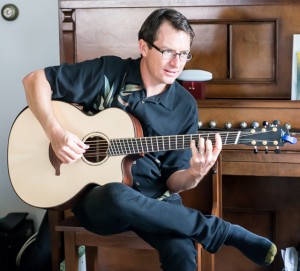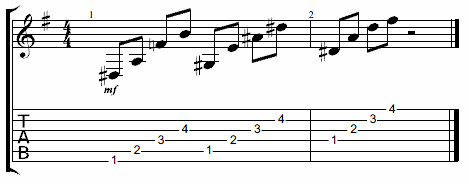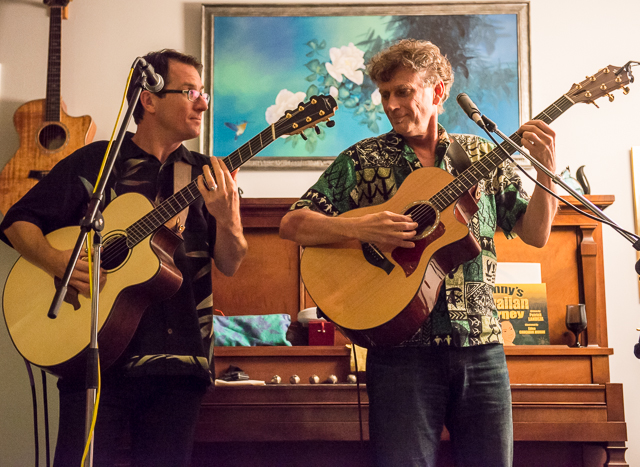Slack key guitarist Stephen Inglis’s workshop in Manhattan Beach after the Redondo Beach Slack Key Concert this year was a bit different than most slack key workshops. Instead of focusing on song material, Stephen demonstrated how learning scale positions along the neck can provide the basis for playing melodies and improvising … skills that are essential in mastering the slack key style.
Specifically, Stephen focused on diatonic “harp” scales, where fingerings are chosen to maximize the use of open strings that can continue to ring while following scale notes are played. An example of a G scale played in Taro Patch tuning is shown below. Note the use of the open strings and the fact that the scale notes are not played from the lowest string to the highest, in order. Also, all scale notes in this particular scale version are played between frets five and nine on the fingerboard.
Stephen demonstrated scales for each step of the diatonic scale in two keys in Taro Patch tuning: G and D. For example, in the key of G, scales were shown for G, Am, Bm, Cmaj7, D7, Em, and F#m7b5 chords. Inglis suggested that mastery of these scales will help enhance students’ ability to add improvisation techniques to their playing and move beyond straight chord accompaniment.
Inglis also showed us a right hand exercise that’s designed to increase left hand dexterity and reach. He calls is the “Spider Exercise”, where the left hand fingering “climbs” one string and one fret at a time, as shown below:
Another variation of this exercise starts on the first string, first fret, and proceeds backwards down the strings from the above exercise.
After the workshop, Stephen Inglis and Jim “Kimo” West gave a house concert, performing some great standard and original slack key material and showcasing their remarkable musicianship.
If you live in or near the Southern California area, and would like to be notified when workshops and concerts are scheduled, subscribe to this blog with the button provided on the page. Mahalo!




